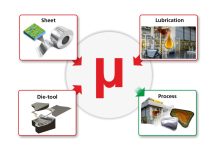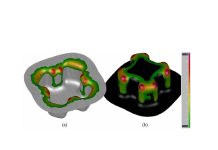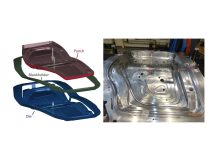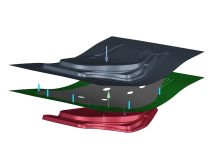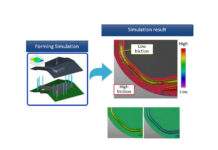Tribology testing to generate advanced friction models performed by U.S. Steel
Past studies have already proven that OEMs can achieve improved forming simulations by using the TriboForm friction models compared to simulations using a constant friction coefficient. In addition, advanced friction models are proven to help shorten development time, increase material utilization, minimize scrap rates, and reflect more realistic contact conditions in stamping simulations. As a benefit, production costs can also be reduced by minimizing or eliminating tryout loops.
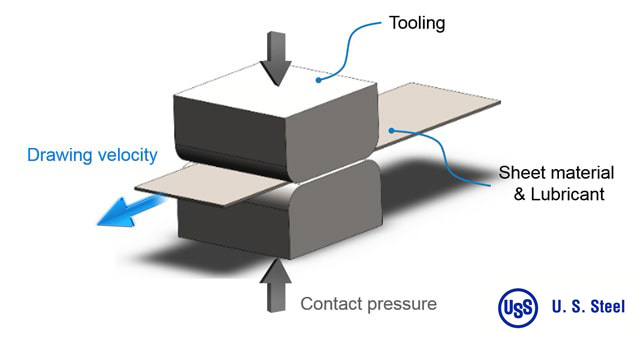
Fig. 1: Factors of friction.
Eager to reap these benefits, a growing number of OEMs and tool makers want easier access to TriboForm’s friction models, which consider parameters including: sheet and tool material and surface roughness, and lubricant type and quantity.
TriboForm’s Global Project Leader, Sanaz Berahmani, says: “However, some OEMs and part makers utilize specific tribology systems other than what is included in our default and brand name library database. In order to cater to this group, we carry out a limited number of tribology tests to create a customized friction model which can then be used in stamping simulations. The logistics issue of having to ship strips of sheet material from the United States to Europe slowed down the process for our customers. Not to mention the transport of associated forming oil samples. In the end, it just isn’t convenient for our US customers to send materials and lubricants to Europe for testing.”
TriboForm decided to collaborate with a testing facility in the United States, which would be capable of performing the tribology testing to meet local demand for the company’s friction models. However, it was not easy to locate suitable facilities that could perform the two required test types with their associated equipment: first, friction testing, which requires an onsite friction tester; second, 3D surface measuring, which requires a confocal microscope to capture 3D surface textures.
As Senior Application Engineer of AutoForm US, Yurdaer Demiralp, explains: “The challenge was to find an institute with a friction tester and confocal microscope on hand, which can be used to perform the analysis following our measurement protocols, as required to generate TriboForm friction models. After an initial investigation by AutoForm, U.S. Steel was identified as the institute with the availability of both testing systems.”
In the next phase, a series of tests were simultaneously conducted at both TriboForm’s partner facilities in Europe and at U.S. Steel to compare the measurements and verify U.S. Steel as a viable partner.
According to Yurdaer Demiralp, Senior Application Engineer AutoForm USA, “In the case of U.S. Steel, they tested two types of advanced high strength steel, DP600-GI and DP600-GA. Part of the testing procedure was new to U.S. Steel, therefore TriboForm provided technical support on carrying the confocal measurements.”
The 3D surface textures of both the tooling and the sheet were measured with a confocal microscope before and after friction testing. The results obtained by U.S. Steel and TriboForm were compared, as shown below in Figure 2. As can be seen from the images, there exists a positive agreement between the 3D surface measurements carried out by both TriboForm and U.S. Steel for the same material.
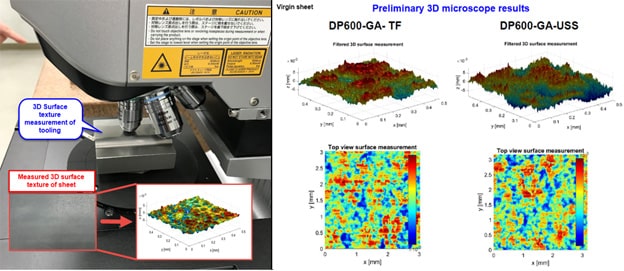
Fig. 2: 3D confocal microscope at U.S. Steel (left) and a comparison with measurements performed by TriboForm vs. U.S. Steel of the virgin sheet surface (right).
The measurements for DP600-GA pressure dependent coefficient of friction are shown in Figure 3, demonstrating close agreement with the results from the TriboForm friction model. It should be emphasized that the final four-dimensional TriboForm friction model can additionally describe the friction as a function of temperature, strain in sheet metal, and sliding velocity, enhancing the analysis of sheet metal formability.
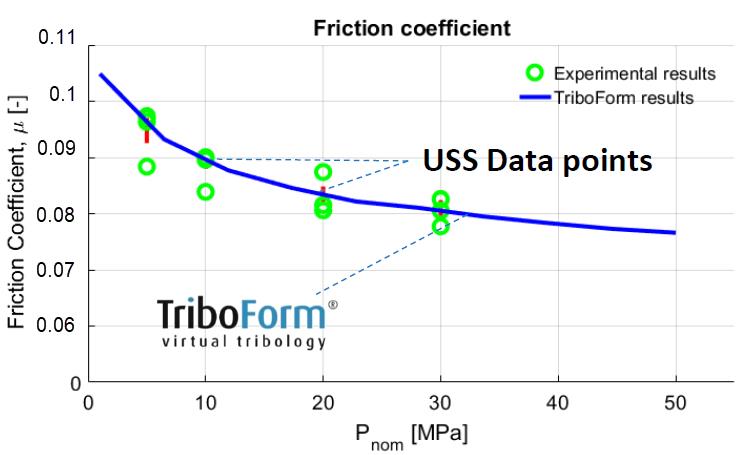
Fig. 3: Pressure dependent coefficient of friction of DP600-GA
Based on this study, that the quality of friction data measured by the friction tester of U. S. Steel is adequate to generate TriboForm friction models successfully. Furthermore, these results verify that U.S. Steel’s 3D confocal microscope equipment captures reliable 3D surface textures that can be directly used within the TriboForm software to create corresponding friction models.
Yurdaer Demiralp concludes: “Introducing U.S. Steel as a certified testing institute for customers in the United States accelerates the process to measure required data to generate a customized friction library. Customers then can utilize these libraries in the TriboForm software and export the resulting friction model for use in stamping simulations. All in all, this has better enabled the US customer to use the TriboForm functionality efficiently regarding alternate materials and quickly deliver advanced friction models to further improve stamping simulation accuracy and capabilities.”
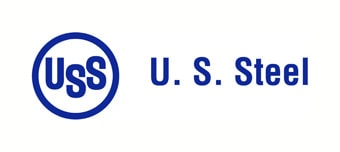
For those readers from the United States who have interest to test their tribology systems or want to know more on the advanced friction models, contact U.S. Steel or the AutoForm US office today.



